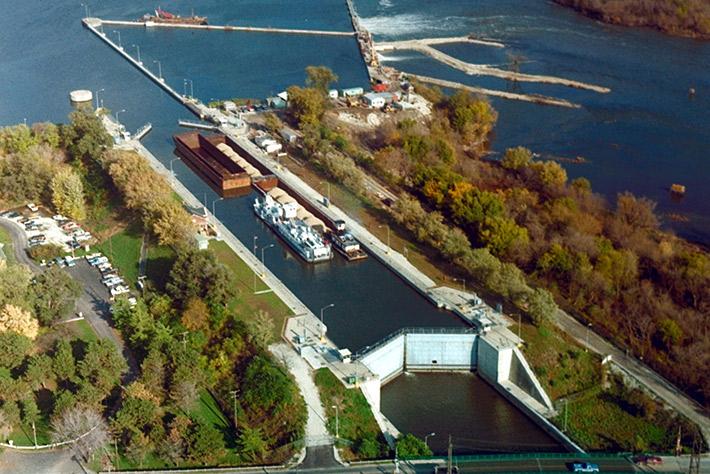Identifying and closing potential pathways for invasive carp introduction or spread are a key component of the Invasive Carp Coordinating Committee’s (ICRCC) prevention strategy. The formation of the ICRCC initially brought together the agencies potentially affected by the expansion of invasive carp into new waterway systems; support for electric barrier maintenance within the Chicago Area Waterway System, known as the CAWS, was a key focal point. This scope has since evolved from a focus on the CAWS to include other potential pathways for invasive carp introduction, including secondary pathways as indicated in the Great Lakes and Mississippi River Interbasin Study report.
The Committee is undertaking several strategic prevention actions to address potential pathways for invasive carp to the Great Lakes.
Operate and Maintain Current Barrier System in the CAWs
The primary permanent tool for preventing movement of invasive carp from the Mississippi River watershed into the Great Lakes is the U.S. Army Corps of Engineers Electric Dispersal Barrier System located in the CAWs. The U.S. Army Corps of Engineers has operated electric barriers in the Chicago Sanitary and Ship Canal since 2002.

Brandon Road Interbasin Project
This project involves structural and non-structural measures to prevent the upstream movement of invasive carp and other aquatic invasive species in the vicinity of the Brandon Road Lock and Dam near Joliet, Will County, Illinois.
Killbuck Creek Pathway
The Little Killbuck Creek in Ohio was identified as a medium risk pathway from the Mississippi River basin to the Great Lakes basin. The Ohio Department of Natural Resources, U.S. Army Corps of Engineers, Summit County Metro Parks and other partners are constructing physical barriers to separate these two basins and reduce the risk for this potential pathway.
Alternate Pathway Surveillance
Federal, state and provincial agencies are leading efforts to control the transport and sale of invasive carp and other invasive species. The Illinois Department of Natural Resources Invasive Species Unit was created in 2012 as a special law enforcement component to support the invasive carp control effort. The Invasive Species Unit consists of Conservation Police Officers who are dedicated to searching for illegal activities within the commercial fishing, aquaculture, transportation, bait, pet, aquarium and live fish market industries.